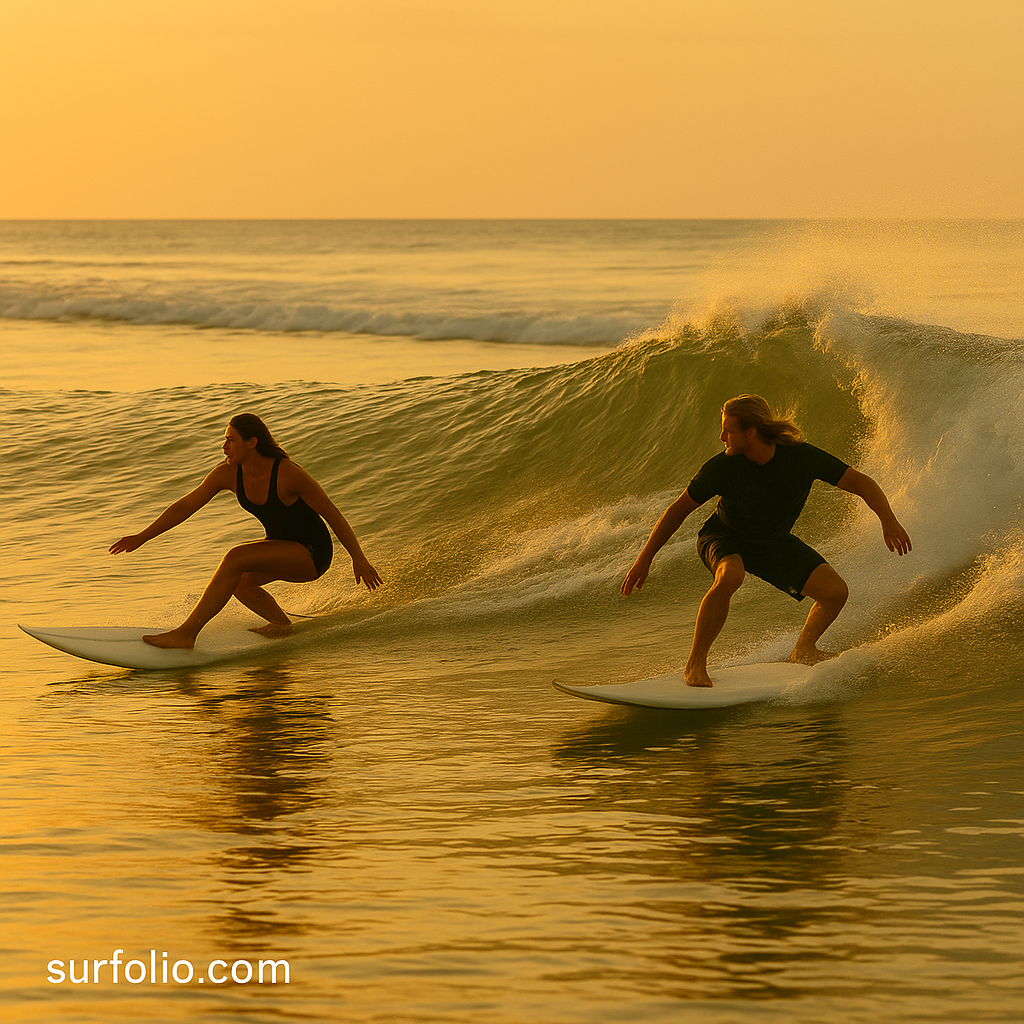
Why Surfing Etiquette Matters
Surfing looks effortless, but behind the stoke is a shared code of respect. Understanding right of way helps keep the lineup safe and enjoyable for everyone.
When every surfer follows the same set of unwritten rules, there’s flow, order, and fewer accidents. When they don’t — chaos.
Right of way isn’t just about rules; it’s about respect, awareness, and connection to others in the water.
The Core Rule: Closest to the Peak Has Priority
The most important rule in surfing is simple:
The surfer closest to the breaking part of the wave (the peak) has the right of way.
That means:
- If a wave breaks to the left, the surfer on the right (closer to the curl) has priority.
- If a wave breaks to the right, the surfer on the left has priority.
Anyone paddling in from the shoulder or behind the priority surfer is dropping in, which is one of the biggest etiquette mistakes in surfing.
Left vs Right Waves
When a wave forms, it usually breaks in one direction:
- Left-hand wave: breaks from right to left (from the surfer’s view facing the shore).
- Right-hand wave: breaks from left to right.
Two surfers can share a wave only if it breaks both ways — one going left, one going right, starting from the same peak. This is called a split peak, and it’s one of the few exceptions to the single-priority rule.
The Takeoff Zone
The takeoff zone is where waves begin to break — and where surfers line up to catch them. The best surfers position themselves right in this zone, timing their paddle perfectly with the wave’s energy.
If you’re sitting on the shoulder or inside the peak, be mindful:
- Don’t paddle for a wave if someone deeper is already committed.
- Don’t block the surfer riding the wave.
- Always look toward the peak before paddling in.
When Multiple Surfers Paddle for the Same Wave
If two surfers paddle for the same wave:
- The surfer deeper and closer to the peak has priority.
- If both are equally positioned, the surfer who stands up first usually takes priority.
- If the wave is split (breaking both ways), each surfer can ride their respective direction — one left, one right.
Communication helps — a quick call like “Left!” or “Right!” avoids confusion.
Paddling Out Etiquette
Right of way also applies to paddling back out:
- Paddle toward the whitewater, not the face of the wave.
- Never paddle in front of a surfer riding a wave unless there’s no other option.
- If you must cross, go behind them, toward the broken wave.
This keeps both surfers safe and maintains the natural rhythm of the lineup.
Dropping In and Snaking
Two big no-gos in surfing:
Dropping In
Taking off on a wave someone already has priority on. It’s unsafe, disrespectful, and can cause collisions.
Snaking
Paddling around another surfer to take their position closer to the peak. It’s sneaky and earns instant bad vibes.
Both actions show poor etiquette — avoid them and you’ll gain respect in any lineup.
Special Situations
- Longboard vs Shortboard: Longboarders can catch waves earlier but should still give way to those deeper on the peak.
- Beginners: Choose less crowded spots while learning; it’s safer for you and others.
- Crowded Lineups: Be patient, take turns, and keep your cool — aggression ruins the vibe.
What to Do If You Make a Mistake
Even the best surfers drop in by accident sometimes. If you do:
- Kick out immediately.
- Apologize genuinely.
A simple “Sorry, my bad!” goes a long way. Surfers respect honesty and humility more than ego.
Final Thoughts
Understanding right of way keeps surfing what it’s meant to be — fun, safe, and respectful.
When everyone in the lineup follows the same rhythm, waves get shared, smiles spread faster, and the ocean feels like a community again.
Surf smart, stay aware, and always respect the peak.
